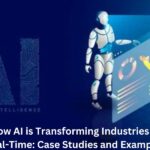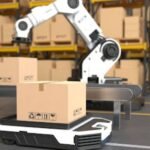Artificial intelligence is now an essential part of higher education. There is literally no niche in this field that wasn’t infected (or blessed?) by this branch of computer science. From personalized learning paths to automated grading, cyber mind offers exciting opportunities to boost the academic routine of any kind. But the question is – is artificial mind a revolutionary force that fuels progress, or a disruptive power that simply destroys the very foundation of conventional education? In this article, we will try to explore both camps and see if a balance can be found. Without much ado…
The Promise of a Revolution
When it comes to the potential of artificial intelligence in the world of academia, it is pretty vast. Below, we offer some of the top ways AI is transforming students’ experience in their alma mater.
- 100% personalized learning. AI-based platforms analyze student data to create customized learning experiences. Adaptive learning techs help adjust content in real time based on your unique strengths and weaknesses. As a result, education gets more efficient and accessible for every student out there.
- Smart tutoring with instant feedback. Chatbots and cyber tutors powered by artificial intelligence provide instant help to college and university students outside classrooms. The most various instruments available on the web offer explanations, answer the toughest questions, and offer feedback. Plus, with the help of online AI tools like WriteMyEssay, which writes papers, undergrads have an opportunity to cope with writing assignments like a pro. These tools are especially helpful in mastering the structure and tone of scientific writing, which many students struggle with. Besides, they are very helpful when the writing task is linked with mastering difficult concepts.
- Automated college operations. It can be literally anything from enrollment to scheduling! AI helps automate various repetitive tasks while staff have an opportunity to focus on more important work, such as student engagement and curriculum development.
- Predicting academic outcomes. Colleges and universities that use smart tech to analyze the performance of undergrads can easily predict potential academic outcomes. The point here is that if at-risk students are identified as early as possible, tutors have a chance to help them and potentially reduce dropout.
- Better research options. AI tools help researchers process gazillions of data sets, identify patterns, and produce insights with the speed of light right from the comfort of their home. This, in turn, speeds up innovation and supports more intense interdisciplinary exploration.
Here Comes the Disruption
While all the benefits that we listed above are quite promising, the use of artificial intelligence in the field of higher education comes with a range of challenges. And we simply cannot ignore them. Here are some of the crucial ones:
- Widened educational gaps. Unfortunately, there is a risk that artificial intelligence can exacerbate educational gaps. For instance, undergrads who have no gadgets or access to the World Wide Web may simply feel like they’re left behind in their educational journey. What is more, bias in algorithms that are part of a-intelligence can worsen systemic inequalities.
- Artificial intelligence takes over different roles. Unfortunately, we cannot deny the fact that computer mind already takes over various administrative and even some teaching roles. So it is no wonder that it makes faculty and staff worry about job security. While new roles may pop up here and there, higher educational institutions must carefully manage this transition to avoid any sort of upheaval.
- Serious concerns about privacy. Too much AI in the educational niche raises serious concerns about consent and privacy. Colleges and universities have to implement various stringent data protection measures and ensure transparency in all the ways that they use artificial intelligence.
- Too many techs. If the college or university relies on artificial intelligence only, this may compromise critical aspects of education. The latter includes human tutoring and mentorship, peer interaction, and emotional intelligence. All of these ‘ingredients’ are essential to a holistic learning experience.
- Quality control. There’s no doubt that such things as automated grading and feedback tools rock and are efficient. However, they may not always align with academic standards. If your alma mater is relying too much on a-intelligence, this can lead to inconsistencies and diminish the quality of education.
Is It Possible to Find the Balance?
Well, first of all, the future of artificial intelligence in the field of higher education lies not in picking between disruption and revolution. It actually lies in finding the right balance between innovations that pop up nonstop and the responsibility of infusing them into the education segment. In order to achieve this, colleges and universities have to do the following:
- Invest money in education for both students and their tutors on the use of artificial intelligence.
- Make ethical design and transparency the priorities all the time.
- Make sure that every student has direct access to the whole pack of AI-based resources.
- Keep the human touch as an essential part of education.
The Verdict
What it all comes down to is that artificial intelligence is the 2-in-1 power in the field of higher education (SpringOpen, 2023). In other words, it is both a resolutioner and a potential disruptor. On the one hand, AI can personalize the process of learning, boost its efficiency, and support in-depth research that, in tandem, starts a brand-new era of academic innovation. However, on the other hand, if the tools of artificial intelligence aren’t carefully implemented in the field of academia, it can simply undermine educational equity and the role of educators. As more and more colleges and universities infuse artificial intelligence into their routine, they have to do so with a clear vision – using AI-based tools should never become an alternative to human connection, but to boost and support it. Only this kind of vision can help higher educational establishments shape the future of higher learning. And finally, institutions all over the globe must also support collaboration between educators, technologists, and policymakers across the most various disciplines in order to make sure tools of artificial intelligence align with all of the existing educational values.












